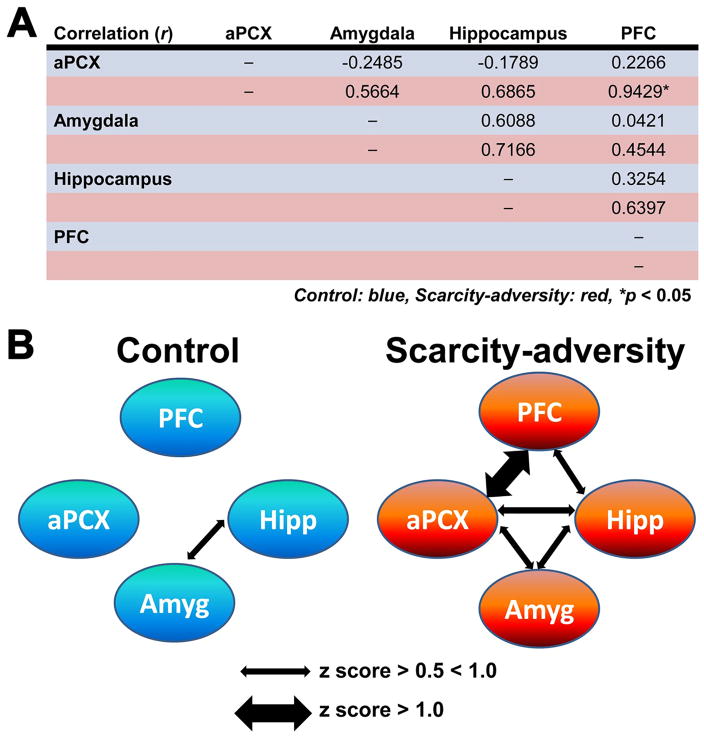Figure 3.
Scarcity-adversity rearing increases olfactory-limbic network functional connectivity in response to maternal odor. A) Pearson correlation coefficients (r) were calculated from relative 2-DG uptake in brain regions of interest and displayed here in blue rows for control reared animals and red rows for scarcity-adversity reared animals. Scarcity-adversity reared pups showed overall greater functional connectivity, with a significant increase in functional connectivity between the anterior piriform cortex (aPCX) and prefrontal cortex (PFC), relative to control reared pups (n = 7–8/group, *denotes significant difference between groups, p < 0.05). B) Within each rearing condition, functional connectivity between the aPCX, PFC, hippocampus (Hipp), and amygdala (Amyg) are visually depicted here, based on z score values calculated from r. Normally weighted arrows indicate a z score value between 0.5 and 1.0. Bolded arrows indicate stronger functional connectivity between brain regions, with a z score greater than 1.0.

